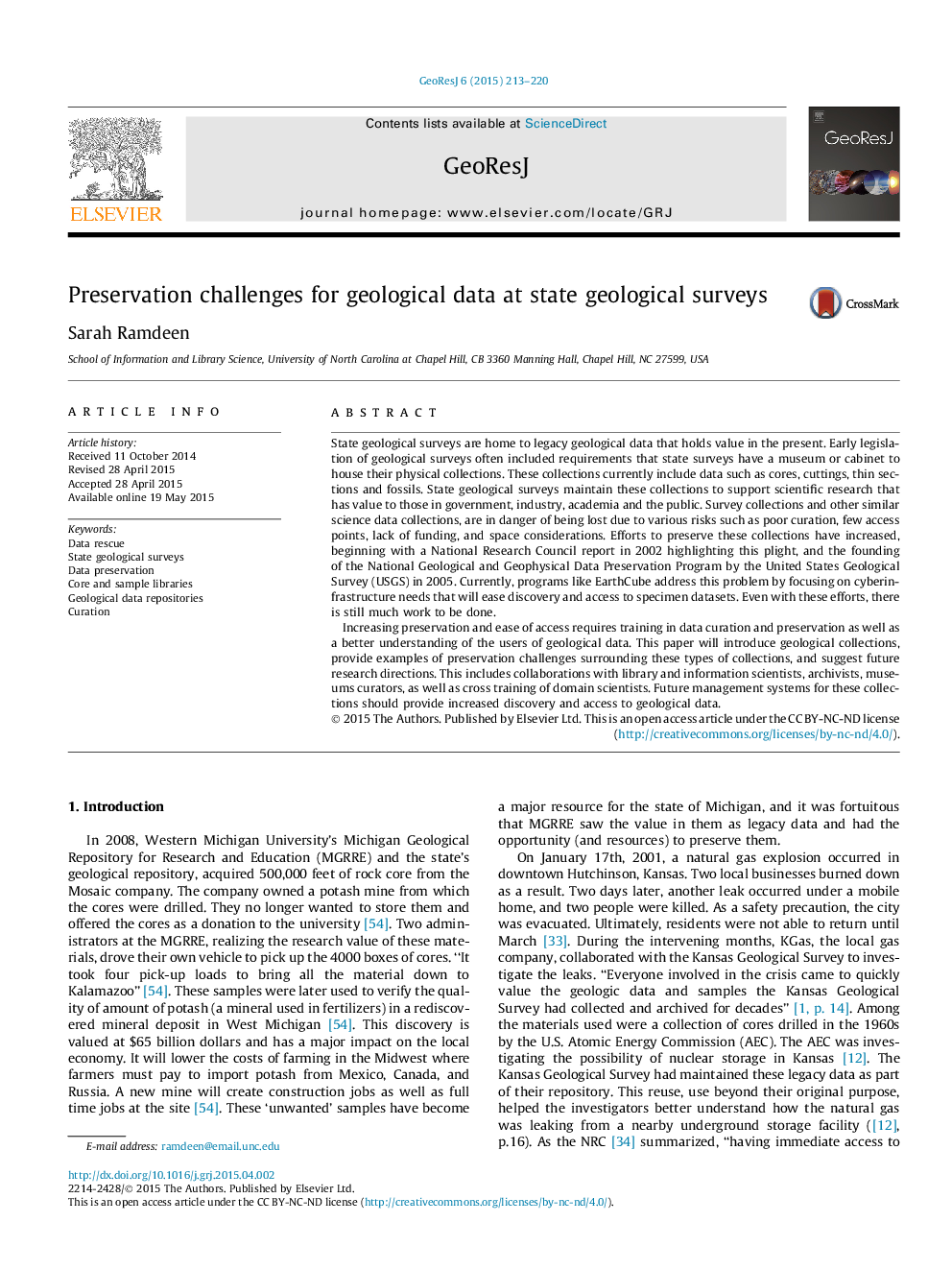| Article ID | Journal | Published Year | Pages | File Type |
|---|---|---|---|---|
| 4674454 | GeoResJ | 2015 | 8 Pages |
State geological surveys are home to legacy geological data that holds value in the present. Early legislation of geological surveys often included requirements that state surveys have a museum or cabinet to house their physical collections. These collections currently include data such as cores, cuttings, thin sections and fossils. State geological surveys maintain these collections to support scientific research that has value to those in government, industry, academia and the public. Survey collections and other similar science data collections, are in danger of being lost due to various risks such as poor curation, few access points, lack of funding, and space considerations. Efforts to preserve these collections have increased, beginning with a National Research Council report in 2002 highlighting this plight, and the founding of the National Geological and Geophysical Data Preservation Program by the United States Geological Survey (USGS) in 2005. Currently, programs like EarthCube address this problem by focusing on cyberinfrastructure needs that will ease discovery and access to specimen datasets. Even with these efforts, there is still much work to be done.Increasing preservation and ease of access requires training in data curation and preservation as well as a better understanding of the users of geological data. This paper will introduce geological collections, provide examples of preservation challenges surrounding these types of collections, and suggest future research directions. This includes collaborations with library and information scientists, archivists, museums curators, as well as cross training of domain scientists. Future management systems for these collections should provide increased discovery and access to geological data.
